All computer users are familiar with the standard keyboard layout – that arrangement where the keys in each row are slightly offset from the ones above and below. This is known as a staggered arrangement, with the common QWERTY layout being its most famous ambassador. This design, where keys form a nonlinear pattern, has its roots stretching back to 1868, when inventors Sholes, Glidden, and Soule adapted a Hughes telegraph machine to create their early typewriter.
It is widely believed this is how the QWERTY layout came to be, since it was ingeniously designed and agreed upon by several manufacturers to prevent the mechanical arms of the typewriter from jamming without infringing on Hughes' patent. While a neat story, it's not the whole truth; the initial utility was more practical, offering necessary space for the mechanical linkages within those early machines to avoid self-intersecting and overlapping parts.
Fast-forward to today, and these physical linkages are relics of a bygone era, yet the staggered layout perseveres with remarkable tenacity on mechanical keyboards. Despite the decades spent using this layout every day, little thought is given to how the stagger is now redundant but deeply ingrained in our muscle memory.
As a computing hobbyist and passionate advocate of mechanical keyboards, I'm always hunting for that extra edge in comfort and efficiency. It may be possible that this cornerstone of keyboard design, the stagger itself, has overstayed its welcome. So, I built an ortholinear keyboard where keys are arranged in a simple, straight grid to take a critical look at if it could be the next logical step for our digital input devices.
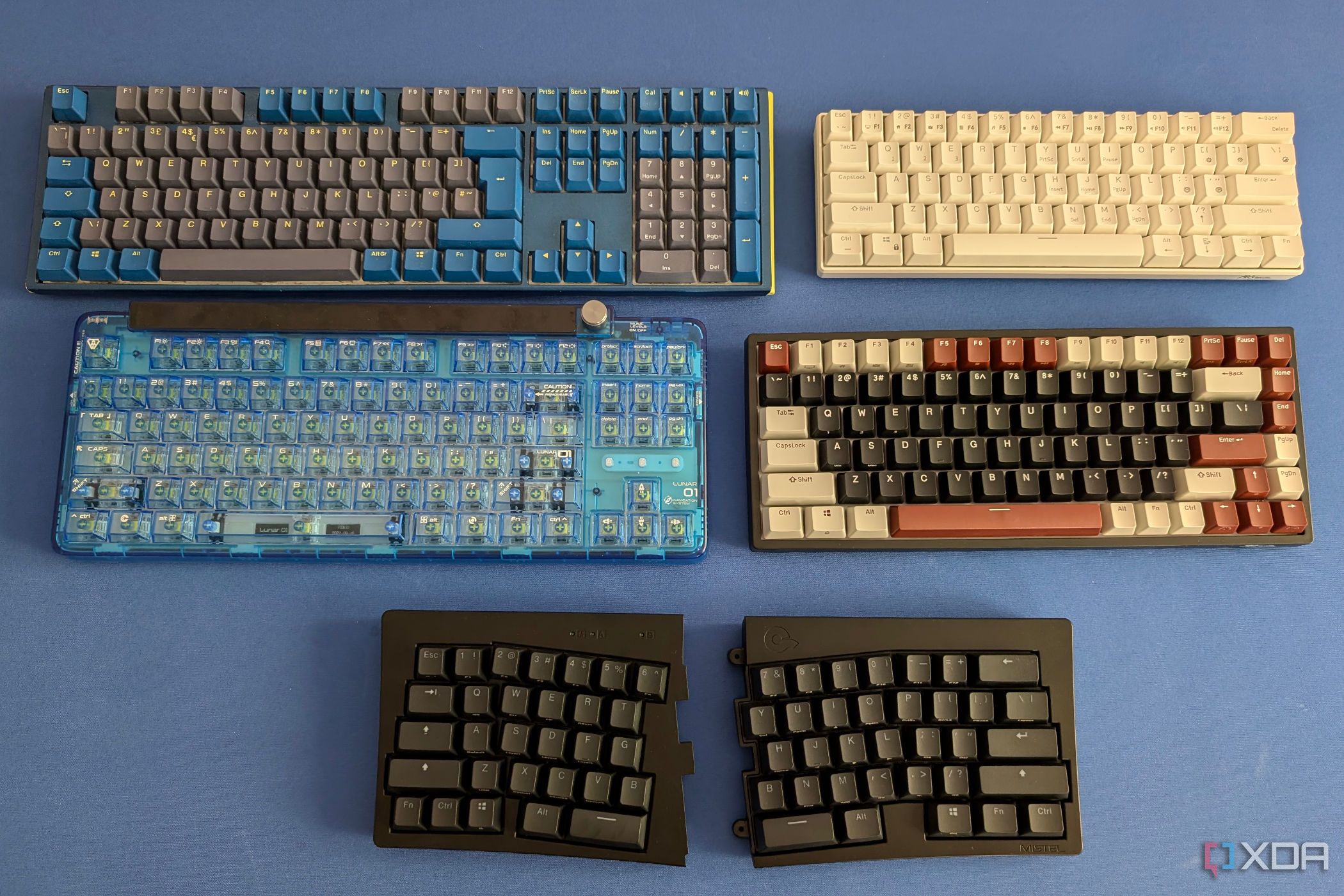
Related
Different keyboard sizes and layouts explained
Finding the right keyboard size for you can be easy, once you know where to start.
4 Unnatural finger movement
Respecting the natural mechanics
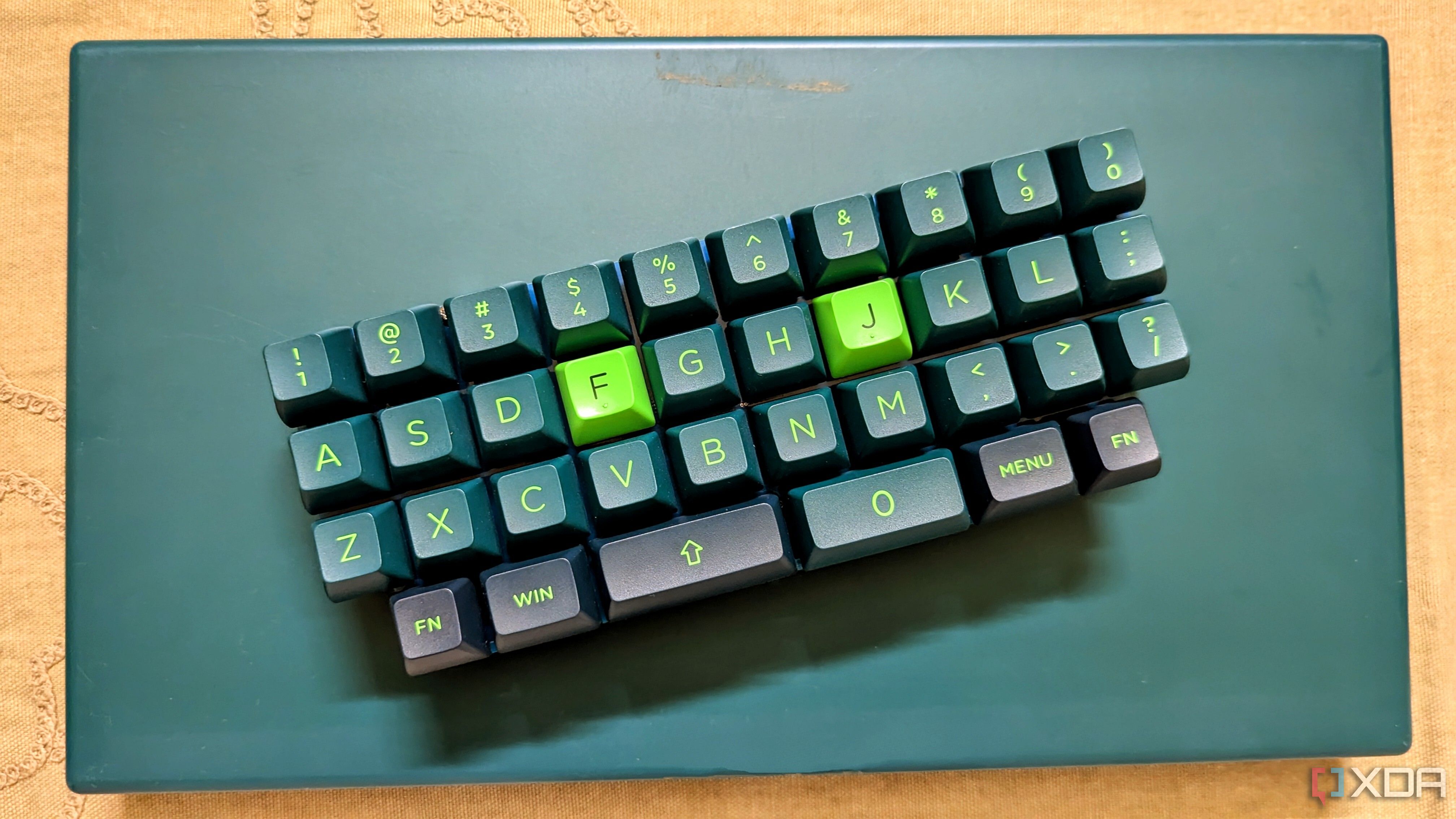
The Lodash33 is an ortholinear mechanical keyboard
The joints in our fingers are naturally designed to help the fingertip move up and down in a plane, as the finger curls inwards. However, a staggered layout forces us into awkward, diagonal stretches to reach keys, even within their designated columnar zones. While this might bother touch typists more than hunt-and-peck typists who don't assign a finger to a column of keys mentally, I'd like you to think about your forefingers resting on F and J on the home row in a QWERTY layout. Hitting keys directly above (R and U) or below (V and M), it's rarely a straight path. This leads to uneven utilization of your hands and can introduce unnecessary strain, especially during long typing sessions.
This constant, subtle twisting and stretching might not seem like much key by key, but it could accumulate over thousands of keystrokes a day, making a beeline for an ER visit with recurring stress-related fatigue, or at the very least, it's a recipe for discomfort. Many typists experiencing this plainly attribute it to "a lot of typing," without realizing the layout they're using could be a significant contributor.
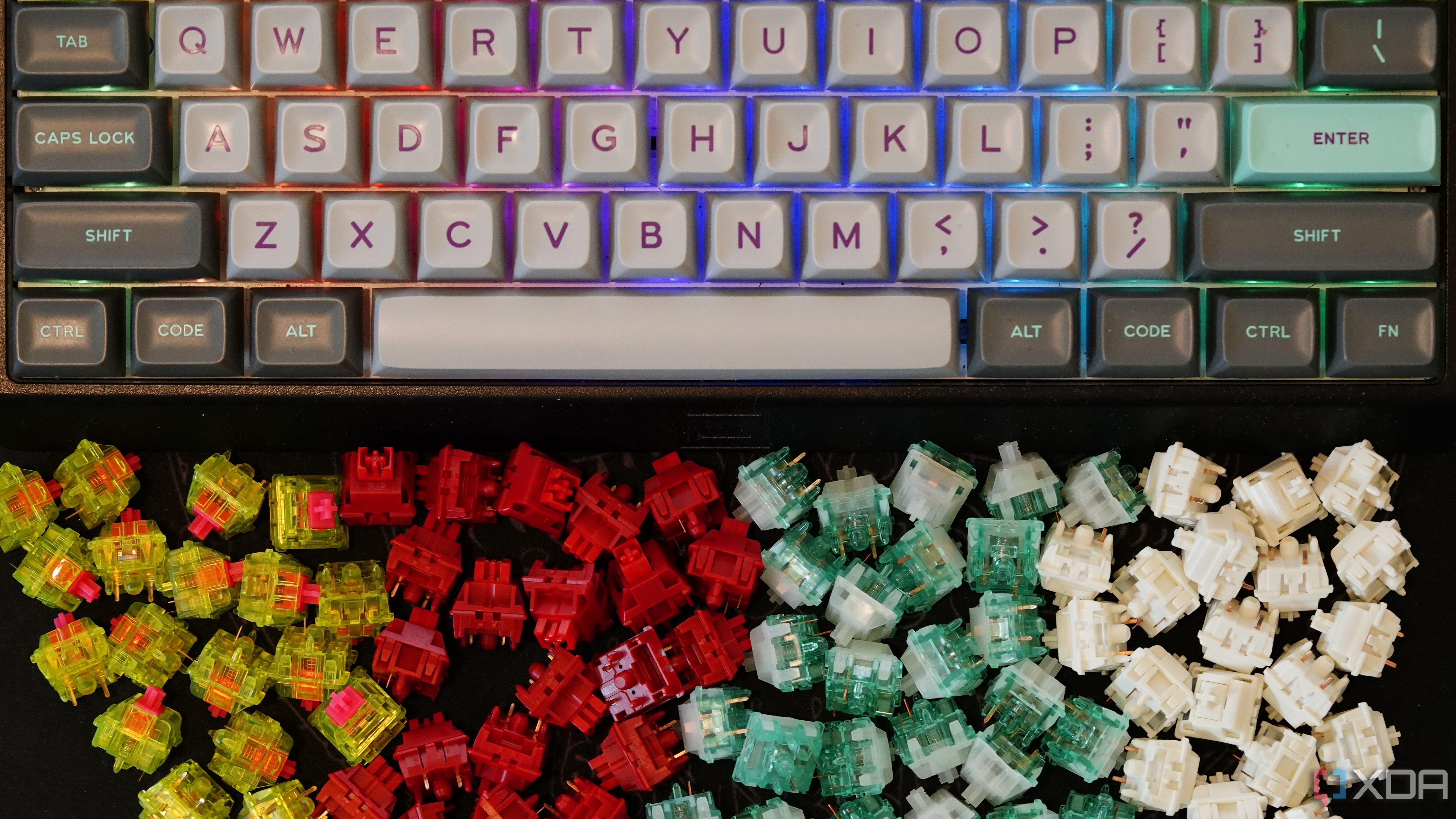
The Wooting 60HE, a conventional row-staggered mechanical keyboard
In stark contrast, ortholinear keyboards, with their keys aligned in straight vertical columns, present a compelling solution. This grid layout encourages your fingers to move primarily up and down, a more natural and direct motion. By minimizing these unnatural sideways deviations, ortholinear designs could potentially reduce physical strain and promote a more balanced, comfortable typing posture, allowing your fingers more harmoniously with their natural mechanics. The predictable and natural motion can create consistent muscle memory. Your fingers learn a simpler set of movements, which could translate to fewer errors and a smoother typing rhythm.
It would be remiss to mention that sideways motion isn't eliminated entirely since the QWERTY layout has more than 10 columns. So, the forefingers I mentioned earlier will still reach sideways for keys like B, T, Y, and N from the resting home position.
3 Stagger is a staggeringly old solution
Familiarity is solely why it's still around
The staggered layout we use today is, fundamentally, a solution to a 19th-century problem: working around the design and patents for the first mechanical typewriter to create something strikingly similar, so users aren't affected when they change machines. In an age of digital sensors and PCBs, this original justification is entirely obsolete. Yet, like an old habit, the stagger persists, largely unchallenged by the mainstream for the same old reason — familiarity.
The dominance of QWERTY and its associated stagger isn't necessarily a testament to its inherent superiority for modern digital input. Instead, it's a classic case of historical momentum – we use it because it was there first, and it became the standard everyone learned. This inertia makes any deviation seem daunting for those willing to change, and niche for every onlooker, locking us into a system that wasn't conceived with ergonomic digital typing as its primary goal.
Breaking free from this historical inertia is crucial. While familiarity is comfortable, it shouldn't be a barrier to adopting a layout like ortholinear, designed with the realities of modern computing and human ergonomics in mind. It looks past the outdated mechanical constraints, even if it means challenging deeply ingrained habits.
2 QWERTY shoulders the blame
Because perhaps ortholinear alone isn't enough
While the efficacy of a row-staggered layout and the health benefits of ortholinear boards may be debatable, there's no denying that there's little sense in the QWERTY layout itself. Each key isn't positioned under suitable fingers depending on the frequency of use and the strength of said fingers. In a video about the subject, James Dingley of the Atomic Frontier YouTube channel highlights that significant improvements in typing efficiency – a remarkable 39% for specific tasks like writing Shakespeare – can be achieved through optimizing the layout, independent of physical stagger. This strongly implies that the QWERTY layout is not particularly efficient to begin with.
Over the years, keyboard enthusiasts have created other layouts, like Dvorak from the 1930s and Colemak from 2006, that rearrange the 26 letters and other essential punctuation keys within the confines of the row-staggered key arrangement we love. These were result-oriented approaches, with Dvorak focusing on reducing finger movement to slash errors by placing frequently used letters on the home row, and Colemak trying to be an easier transition over from QWERTY while addressing the older alternative's limitations. Colemak is a product of the internet era and was shaped by feedback from other enthusiasts too, with only 17 letters moved around from the QWERTY base.
However, switching to a new arrangement of the alphabet on your board alone doesn't alleviate the ergonomic concerns of row-staggered construction.
In his video, Dingley mentions that ortholinear keyboards are about 3% better in performance tests compared to staggered ones, as evaluated by a machine learning algorithm. While that might sound modest, it's a quantifiable benefit to aligning keys vertically for raw output.
I believe that together, an ortholinear design and an alternative, optimized keymap could be the recipe for comfortable typing in the long term. The consistency of the grid could make learning and mastering these more efficient letter placements easier, potentially unlocking greater gains in both speed and comfort than the 3% figure alone suggests.
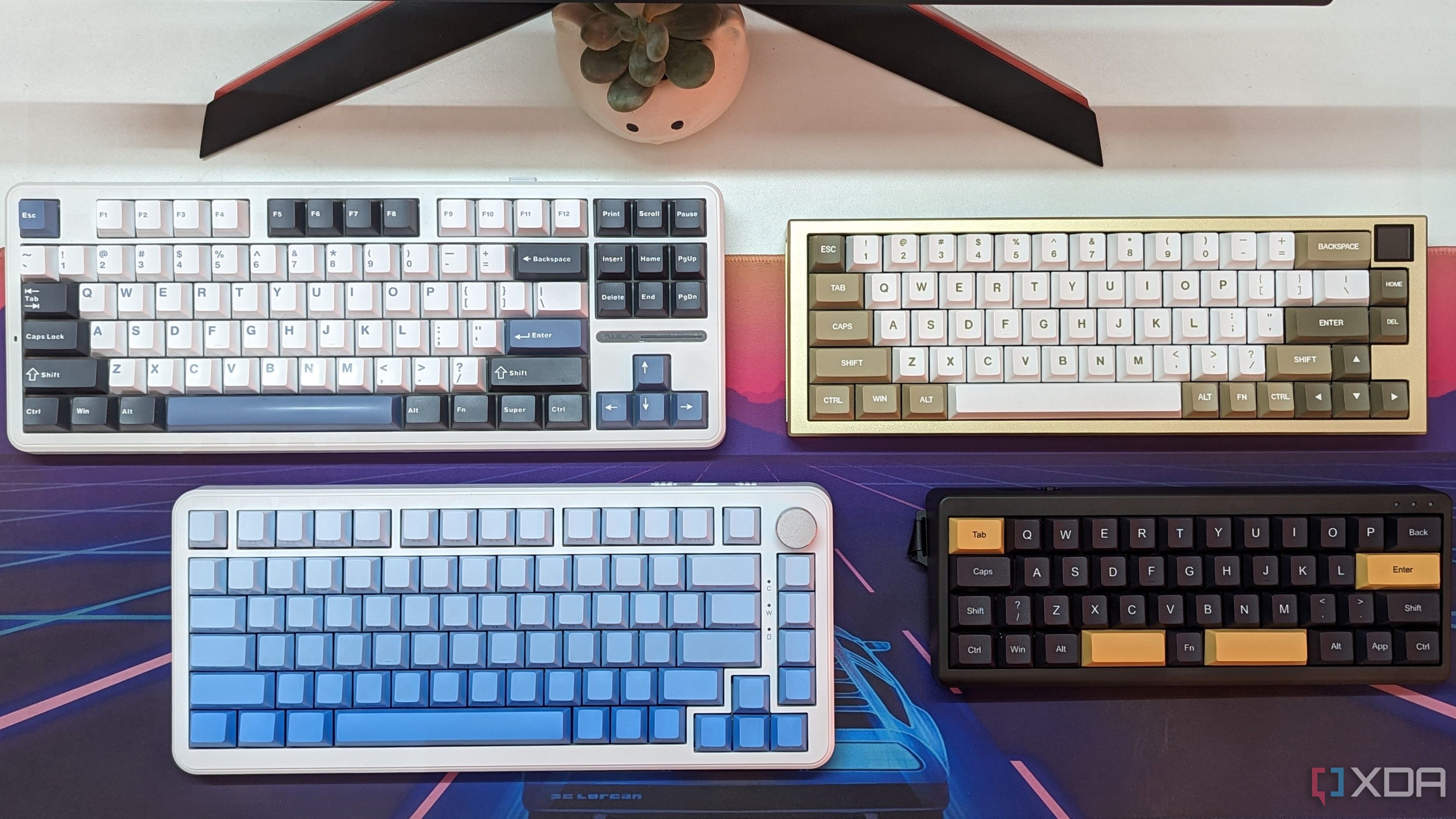
Related
I tested every keyboard layout and this is what I'm sticking with
From full-sized to 40% keyboards, I tried everything to decide my favorite layout
1 It's a wide world out there
More designs than ever before
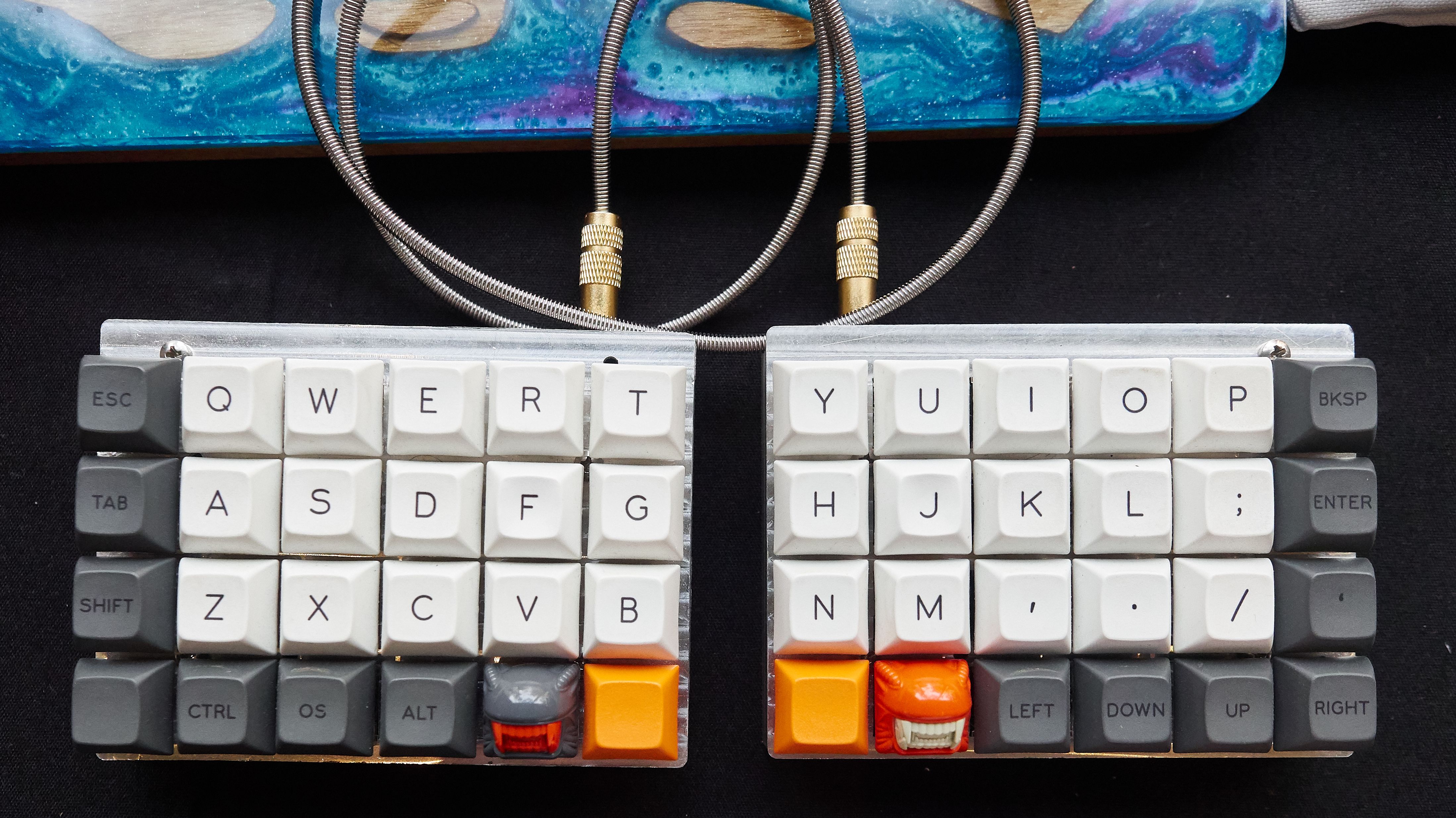
Source: WikiMedia Commons
A split ortholinear mechanical keyboard
I harp on the potential benefits of ortholinear construction as though my life depends on it, but in the past decade, a lot more has changed. 3D printing at home is more feasible at home than ever before, and the keyboard community now underscores the importance of open-source designs. The result is every imaginable type of mechanical keyboard wired up on someone's soldering station at home. I've tried boards like the Dactyl Manuform that argue a handshake-like typing posture is most comfortable, and I've seen columnar stagger on boards like the Lily58, where the columns are shifted to accommodate the varying reach of your fingers, which aren't all equally long.
There's little scientific evidence to justify the ergonomic benefits of each individual layout, mostly because of the challenges in quantifying the differences across a standardized scale. However, we are no longer shackled to whatever mass-market brands like Logitech and Microsoft push in the name of ergonomics. The only way to find what works best for you is to invest research efforts in finding one of the many alternative keymaps that works for your use case if you're committed to unlearning QWERTY.
Otherwise, you could just pick up an Arisu layout, a split keyboard, an ortholinear board, or some other board built differently, without the typical row stagger. I prefer attending local mechanical keyboard community meets where people bring what they type on, for others to experience. Its the simplest way to find optimal paths without blowing a hole in your wallet.
Overcoming hurdles in the name of optimization
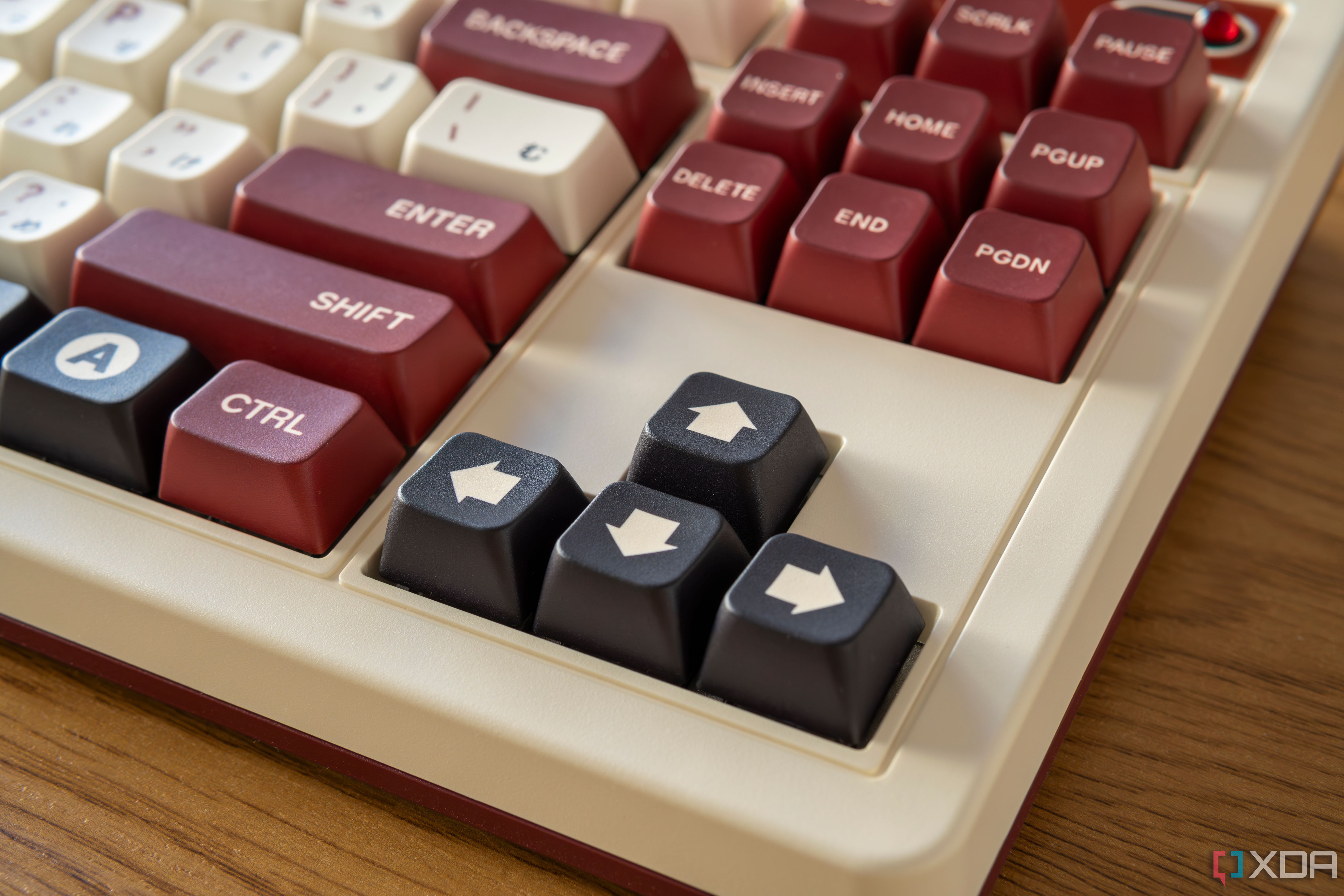
Returning to my example of ortholinears as a viable alternative to staggered keyboards, its clear that the path to widespread adoption is riddled with obstacles and obstinate users. I also won't sugarcoat my words — learning a new keyboard layout or even new key placement after decades of using QWERTY is no mean feat. I just hope that the strong ergonomic argument for more natural finger movement suggests there's inherent value in trying out a change.
My argument isn't that staggered keyboards are suddenly unusable. Rather, it's that they represent a legacy design that may no longer be the optimal choice. Alternative layouts and keymaps offer a more logically structured and potentially more ergonomic physical interface for typing. While the transition requires effort and the mass-production industry has a lot of catching up to do before these alternatives are more accessible, pushing past these initial barriers could lead to a significantly improved typing standard for everyone in the future.
.png)










 English (US) ·
English (US) ·